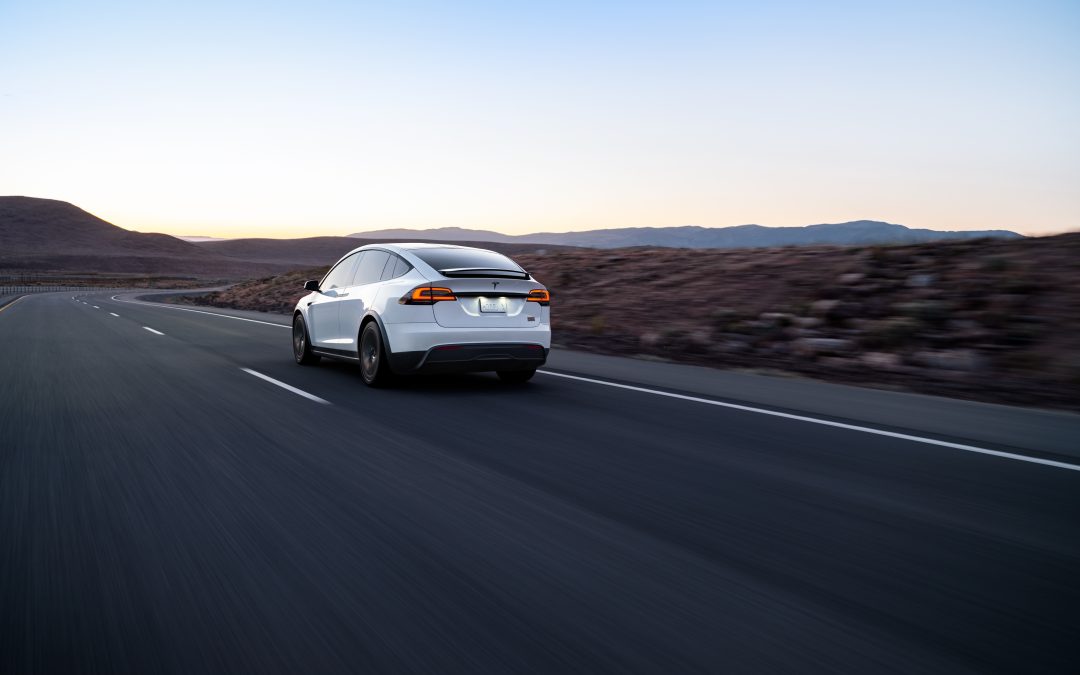Four of five Winter Park commissioners own EVs or a hybrid
Board sets environmental policy for the city while members vote with their own wallets
Commissioner Kris Cruzada bought a Tesla this summer, making him the fourth person on the five-person Commission to drive an electric or hybrid vehicle.
“I do like it,” he said. “I’m not having to go fill up at Costco and wait 15 minutes. I’m just charging at home.”
He said the move was as much a financial one as it was reducing his own personal reliance on fossil fuels. It costs about $20 to charge his car’s battery, he said, vs. a $60 or $70 tank of gas.
Cruzada joins commissioners Todd Weaver and Marty Sullivan, who also drive Teslas, and Vice Mayor Sheila DeCiccio, who drives a hybrid SUV.
Weaver, who was the first to buy a Tesla about two years ago and has also installed solar panels on his roof, said he’s thrilled to see his fellow commissioners invest in electric vehicles.
“I’m very tickled about that,” he said. “I’ll never buy another gasoline car.”
He recently towed his pontoon boat behind his Tesla to Florida from a weeks-long sailing trip in the Lake Champlain area in Vermont.
“I wanted to show it could be done,” he said. “I had to charge a lot, but I can get about 150 miles with about 15 minutes of charging.”
He used Tesla’s network of supercharging stations at hotels and stores along major highways.
Weaver operates the administrative side of his business, TruGrit Traction, out of his house and is set to be recognized by the City Commission this week as a “platinum level green business.” The company engineers special wheels to carry cameras through sewer pipes during inspections.
Mayor Phil Anderson drives a gas Subaru, though he says an electric vehicle or a hybrid are “under consideration,” noting that he’s eyed the Solterra, Subaru’s electric SUV.
If he makes the change, it’s possible Winter Park would be the first city commission in Central Florida go 100% EV.
Questions or comments? Email the editor at WinterParkVoiceEditor@gmail.com


150 miles on a charge? Well, that’s one slow trip to Vermont, but everyone knows sailing on Lake Champlain is awesome. Let’s be honest about EV’s: They are luxuries for short trip folks. And you’re saving the planet….one African child laborer/miner at a time.
We have all been led to believe EVs are the best way to go for our environment.. But the reality is quite different. What happens to all the batteries? How are they disposed of? That is not such a pretty picture for the environment and it is a problem that hasn’t been solved. And then there are issues with the batteries exploding on electric bikes and cars. While regular car batteries can explode, it is a much bigger and deadlier issue when it happens with an EV because of the size of the batteries.
Hybrids are at least capturing and utilizing some energy created which was otherwise going to waste. Although, ask yourself, where do all those batteries (the ones the 3rd world child labor slaves mined the lithium for) go to die once the green car is no longer usable?
EV’s are a farce. Pat yourself on the back that you plug into the “green” wall socket in your garage. You know, the socket that puts out electricity produced from coal being burned, coal that was brought here from mines in South America on giant fossil fuel burning cargo ships before being transported with via fossil fuel burning trains or trucks to energy producing plants. Yes, it’s not all nuclear produced. Way to go, “green” warriors!!
Safety is a genuine, but overlooked, concern with EV’s.
Not just when using the self driving function.
Crash tests have shown that many EV’s have the potential to increase risks of severe injuries especially to occupants of conventional cars. The batteries in EV’s are so heavy that vehicle weights are appreciably higher. They’re high speed battering rams that crush the passenger compartments of other vehicles.
And two EV’s meeting head on?
Until batteries can go further and weigh less, it is a dirty little EV secret.
Another dirty little EV secret is that the green power out of that Tesla garage charger isn’t so green. Stanton Energy Center over off Alafaya (where FPMA gets power and WP Utility buys from) uses some COAL or so I’ve heard. We don’t mine coal in Florida last I checked so how did that COAL get to Stanton? I’m guessing via something burning fossil fuels to transport it. I’m not anti environment but if you burn fossil fuel to get “clean” power is it actually any better? Maybe we should just try to be less wasteful citizens. You know turn off lights, not leave sliding glass doors open in summertime, put our AC up to 76-78, not leave irons, flat irons and ovens on any longer than necessary etc. Food for thought.
Stanton gets their coal from 90 car long trains. They used to come through WP but got diverted a few years ago. I’ll bet they come from West Virginny!
EV owners charge their cars ahead of a storm, just like one might fill up a gas guzzler. Using charging during or immediately afterward is “road apple” logic. What do you think powers gas pumps? Try again please.
The petrochemical industry and their allies are spreading misinformation about electric vehicles, behavior which has set climate mitigation back as much as 30 years. Air pollution and soil and water contamination continue as we cling to the use of fossil fuels. I would like to set the record straight in response to comments from Mr. Warner and others.
Although some plug-in hybrids only get 35-45 miles on a charge before the petro-fuel engine (ICE) kicks in, most fully electric vehicles get between 200-450 miles on a charge. Even the plug-in hybrids can provide for 90% of trips by average Americans.
Lithium-ion batteries have been recycled on a small scale for many years, and now large-scale recycling of lithium and other battery materials from EVs is prevalent.
True, certain Lithium-ion batteries can catch fire, but Lithium-ion batteries burn, they don’t explode. When EV batteries catch fire, it is nearly always in an accident that rips the bottom off the car, where the batteries reside. Such accidents also rip fuel tanks from ICE vehicles, leading to explosions and fires.
Lithium is mined in many places around the world where child labor is not a problem. (Although child labor in some cobalt mining in Africa has been reported, cobalt mines coming online soon in Maine, Alaska and other places will mitigate these concerns.)
While there is an oil spill EVERY single day somewhere in the world, one never hears of spills for EV battery components, most of which are environmentally inert by themselves.
The comment regarding collisions with EVs is backwards. Since EV batteries are almost always under the floorboards, the mass is low and energy does not transmit to the passenger compartments of other vehicles. Furthermore, most EVs don’t have a 400-pound engine in the front that hits the passengers, but rather a hollow “frunk” and frame components that crumple, making collisions much safer for both vehicles.
The 4,400-pound weight of the best-selling EV, the Tesla Model Y, is not much greater than comparably sized ICE vehicles.
Coal is on its way out. One OUC-owned Stanton power plant is being converted to burn natural gas now. As soon as that conversion is completed, the second plant will be converted to natural gas. Both plants are scheduled to be shut down entirely by 2050.
Defending crash test information by presuming there will never be larger EV’s than the current Tesla sedans is not where we are going. There is, and there will continue to be, ongoing development of pick ups and larger battery powered SUV’s. The crash test data exists to suggest that heavier EV’s can and WILL cause injuries commensurate with the greater weight of the vehicles. It is a dirty secret that those kicking and screaming about climate risk ignore.
All this EV talk is very genteel.
But folks this is FLORIDA.
How do you think folk in the BIG BEND are feeling about EV after Hurricane Idalia?
Kind of hard to keep your EV going without ELECTRICITY isn’t it or when your EV charging station is in 6 feet of water?
And what are the folk with EV supposed to do who are STRANDED in their homes?
Just tell the officials in their ICE (internal combustion engine vehicles) no thanks turn around and come back in an EV?
EV is good for golf carts and some other purposes but it’s not ready to dethrone ICE and hybrid.
it’s time will come – just not yet.
Lots of work to do on EV before they can be “king of the road.”
If a charging station is in 6 feet of water, any car nearby will not operate. Equating EV with hurricane risk seems a bit of a stretch. And as our scientist commissioner points out, one could drive 200-450 miles on a charge and to a place with power for a charge, unless the whole state was out. I would think the major drawback of EV right now is the initial cost. But I do agree with you, Winter Park would be much safer and have a better quality of life if everyone drove golf carts instead of mega SUVs.
The startling difference between EVs and their ICE counterparts was the focus of a keynote speech at the Transportation Research Board annual meeting on Wednesday from National Transportation Safety Board chair Jennifer Homendy.
“The U.S. transportation sector accounts for the largest portion of U.S. greenhouse gas emissions, and I firmly believe it is a human right to breathe clean air,” she said. “But we have to be careful that we aren’t also creating unintended consequences: more death on our roads.”